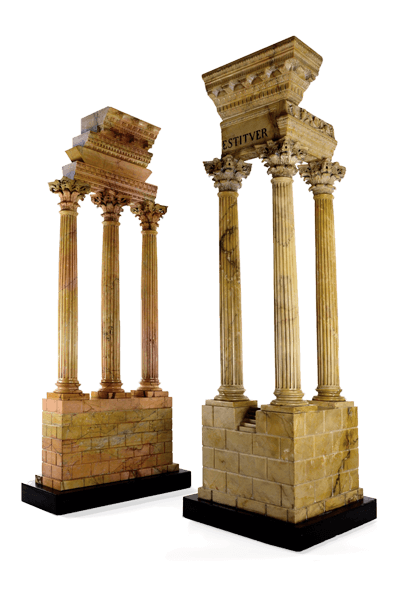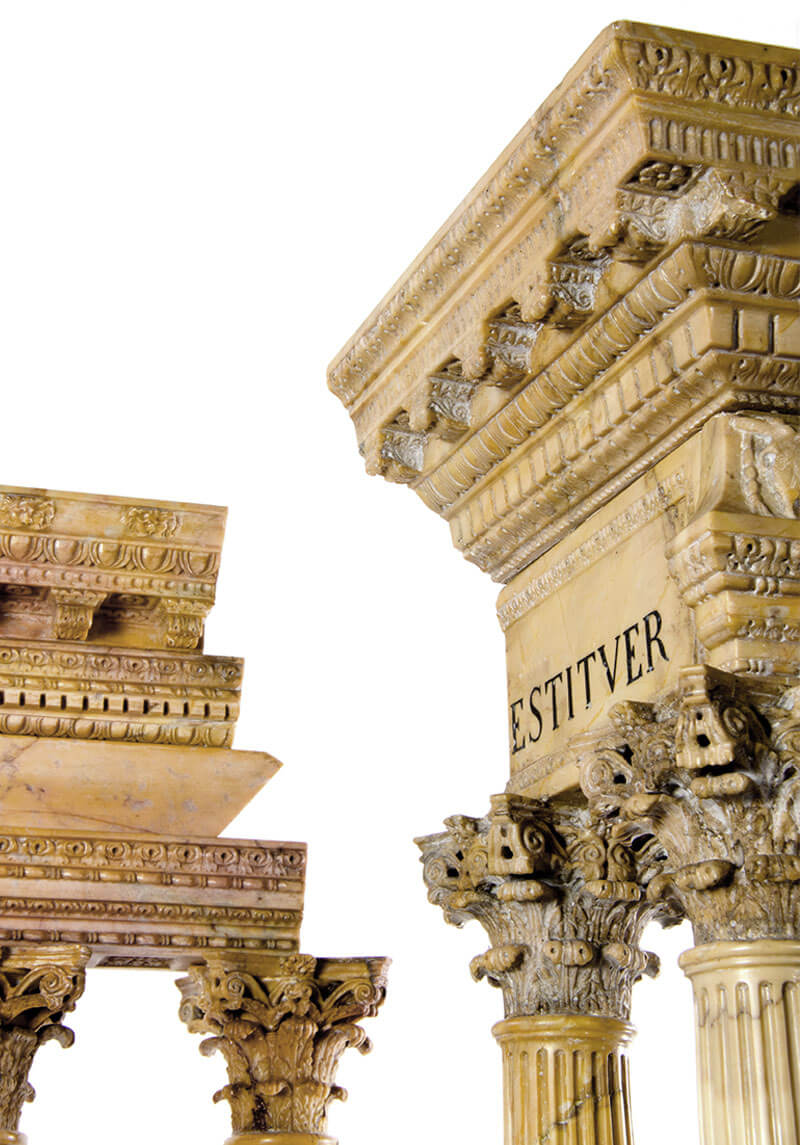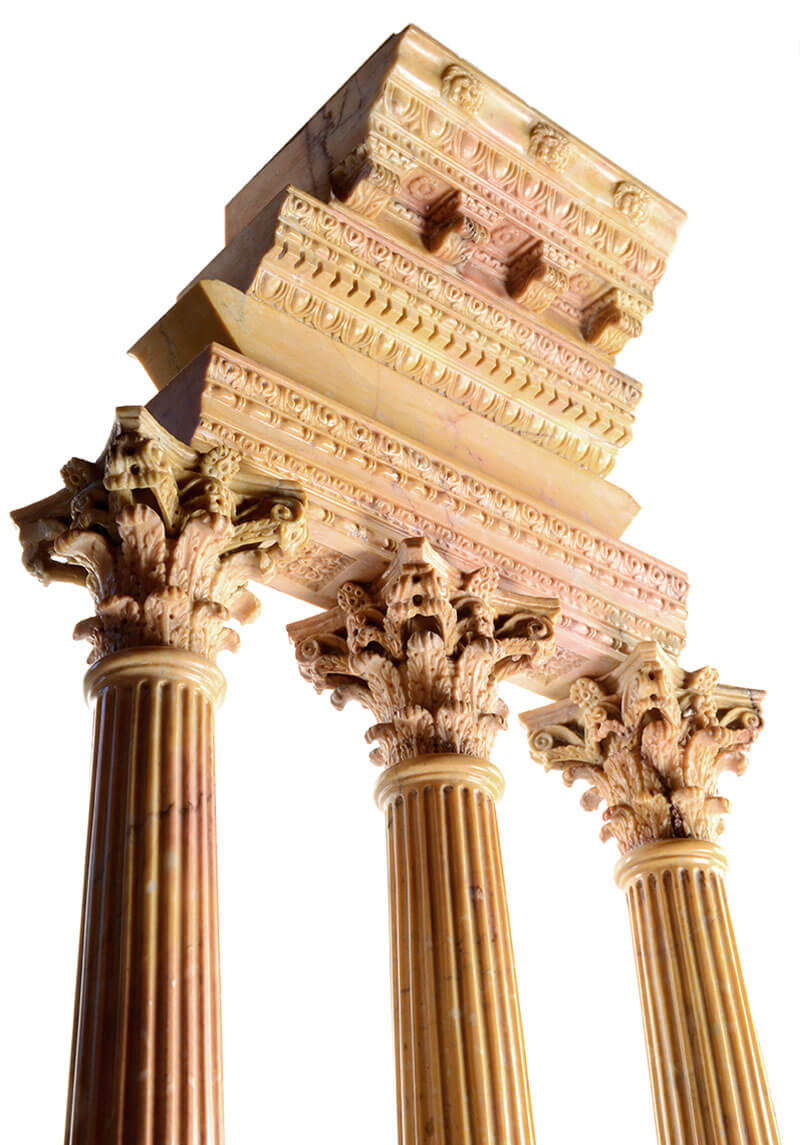
Temples of Vespasian and
Castor & Pollux*, Rome
giallo & black marble
31″ h., ca. 1850
Almost as long as there have been Roman souvenir architectural models, there have been miniatures of these familiar Forum ruins. The earliest Temples of Vespasian and Temples of Castor and Pollux date to the first part of the 19th century, when, during the French occupation and later, archaeological excavations of the temple revealed much of their current form. Thus, while we think these places as ancient, it was their novelty that spurred the production of souvenirs.
This very impressive (31” high) assembled pair of models were carved in Rome ca. 1860. Replicas of these temples fashioned in this period are typically much smaller, and less exactingly turned out. Though assembled, the very similar and highly realized carving of the models’ Corinthian capitals, and the range of other nearly identical details suggest they may have been made in the same shop. It is clear that only a few scarpellini would have undertaken these demanding models.
The stone – giallo antico – was quarried at the height of the Roman Empire, two thousand years ago, near Chemtou, in Western Tunisia and incorporated into the city’s ancient architecture. After Rome’s fall, it undoubtedly formed part of the rubble of ruined Rome. Giallo antico and Siena marbles are often confused, owing to their similar coloration. However, the matrix with giallo is red or brown, while with Sienna it is purple. To date, we’ve uncovered no evidence that marble from Siena, 150 miles north of Rome, was imported for the purpose of fashioning souvenirs. There was no reason for scapellini to go to this expense; the ground in Rome was chock-a-block with fragments of ancient marble, free for the taking.






